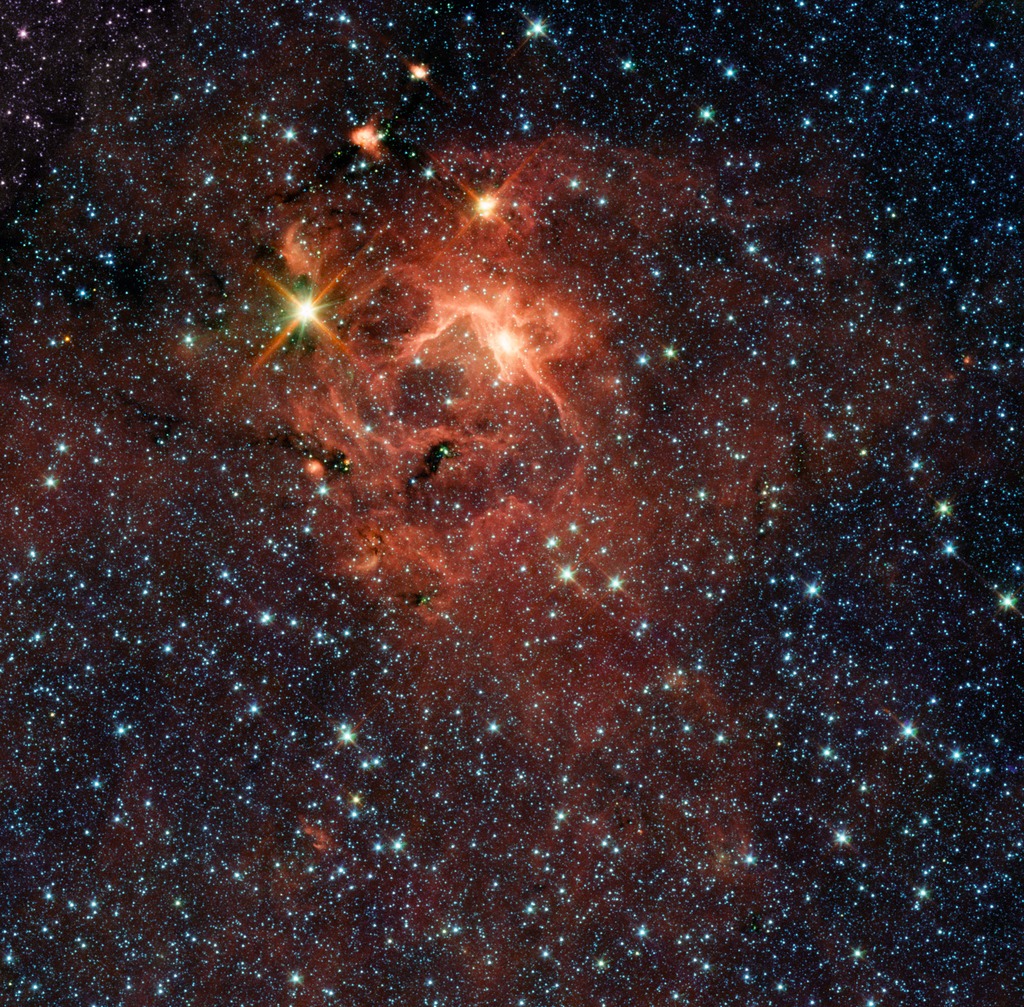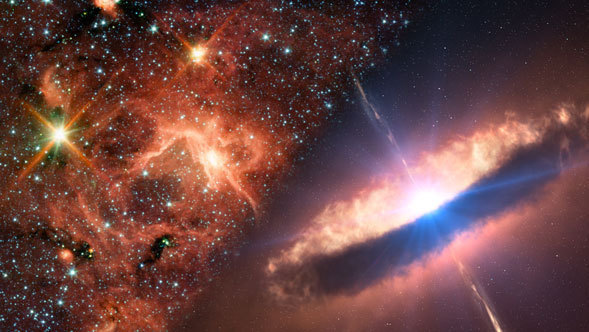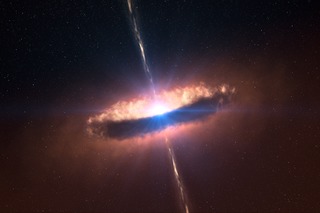
Credit: ESO/NASA/JPL-Caltech/S. Kraus
Observation • July 14th, 2010 • sig10-011
sig10-011
This star-forming region, captured by NASA's Spitzer Space Telescope, is dominated by the bright, young star IRAS 13481-6124 (upper left), which is about twenty times the mass of our sun and five times its radius, and is surrounded by its pre-natal cocoon. It is the first massive baby star for which astronomers could obtain a detailed look at the dusty disk closely encircling it. The research provides direct evidence that massive stars do form in the same way as their smaller brethren.
From this archival Spitzer image, as well as from observations done with the APEX 12-metre sub-millimetre telescope, astronomers discovered the presence of a jet, hinting at the presence of a disk. This was then confirmed by observations made with the European Southern Observatory Very Large Telescope Interferometer.
This picture was taken with Spitzer's infrared array camera. It is a four-color composite, in which light with a wavelength of 3.6 microns is blue; 4.5-micron light is green; 5.8-micron light is orange; and 8-micron light is red. Dust appears red-orange and most stars are blue, though ones deeply embedded within dust (like IRAS 13481-6124) take on greenish-yellow tints.
About the Object
- Name
- IRAS 13481-6124
- Type
- Star > Evolutionary Stage > Young Stellar Object
- Star > Spectral Type > O
- Star > Circumstellar Material > Disk > Protoplanetary
- Nebula > Type > Star Formation
- Distance
- 10,000 Light Years
Color Mapping
| Band | Wavelength | Telescope |
| Infrared | 3.6 µm | Spitzer IRAC |
| Infrared | 4.5 µm | Spitzer IRAC |
| Infrared | 5.8 µm | Spitzer IRAC |
| Infrared | 8.0 µm | Spitzer IRAC |
Astrometrics
- Position (J2000)
- RA =13h 51m 37.8s
- Dec = -61° 39' 8.1"
- Field of View
- 38.2 x 37.6 arcminutes
- Orientation
- North is up






